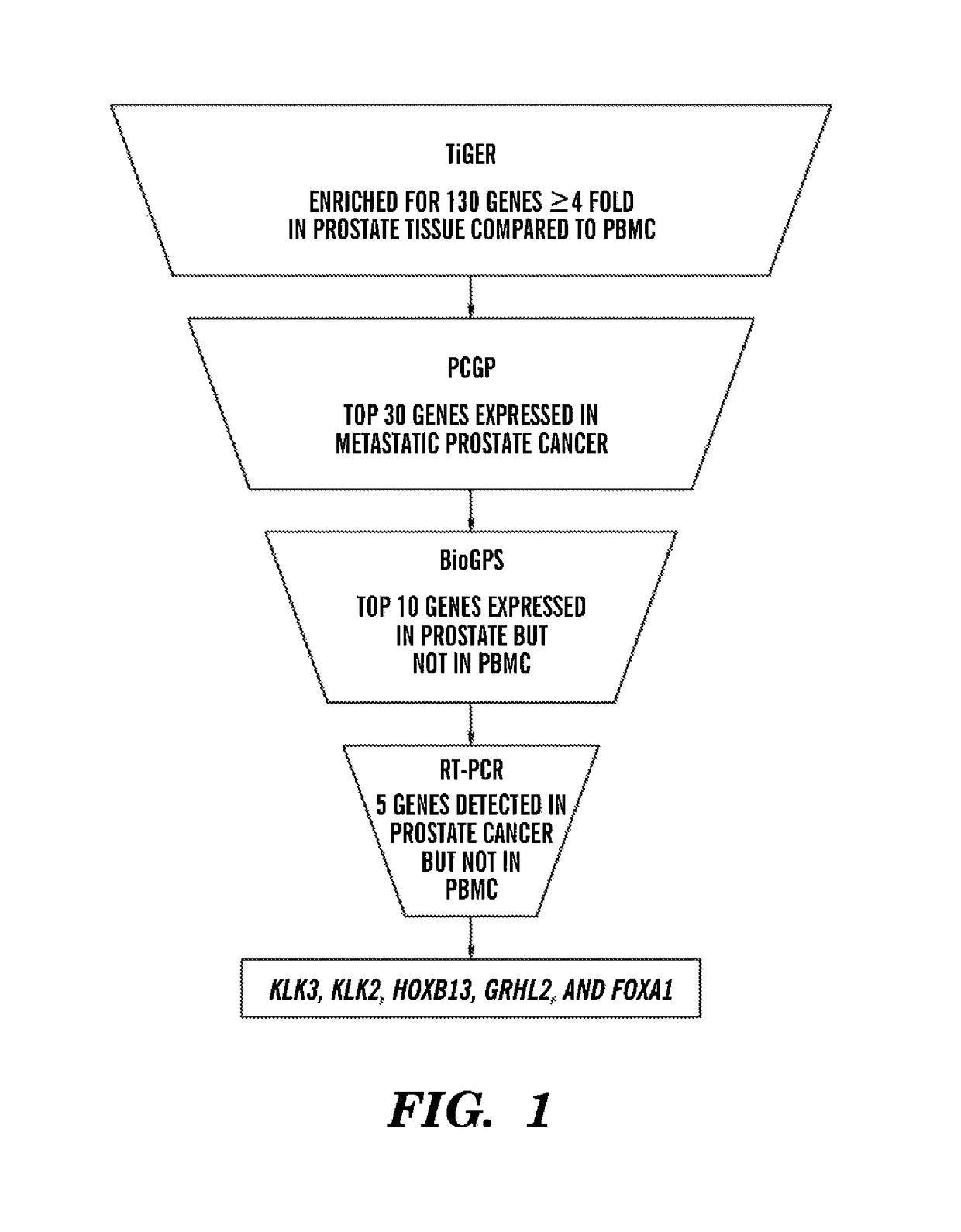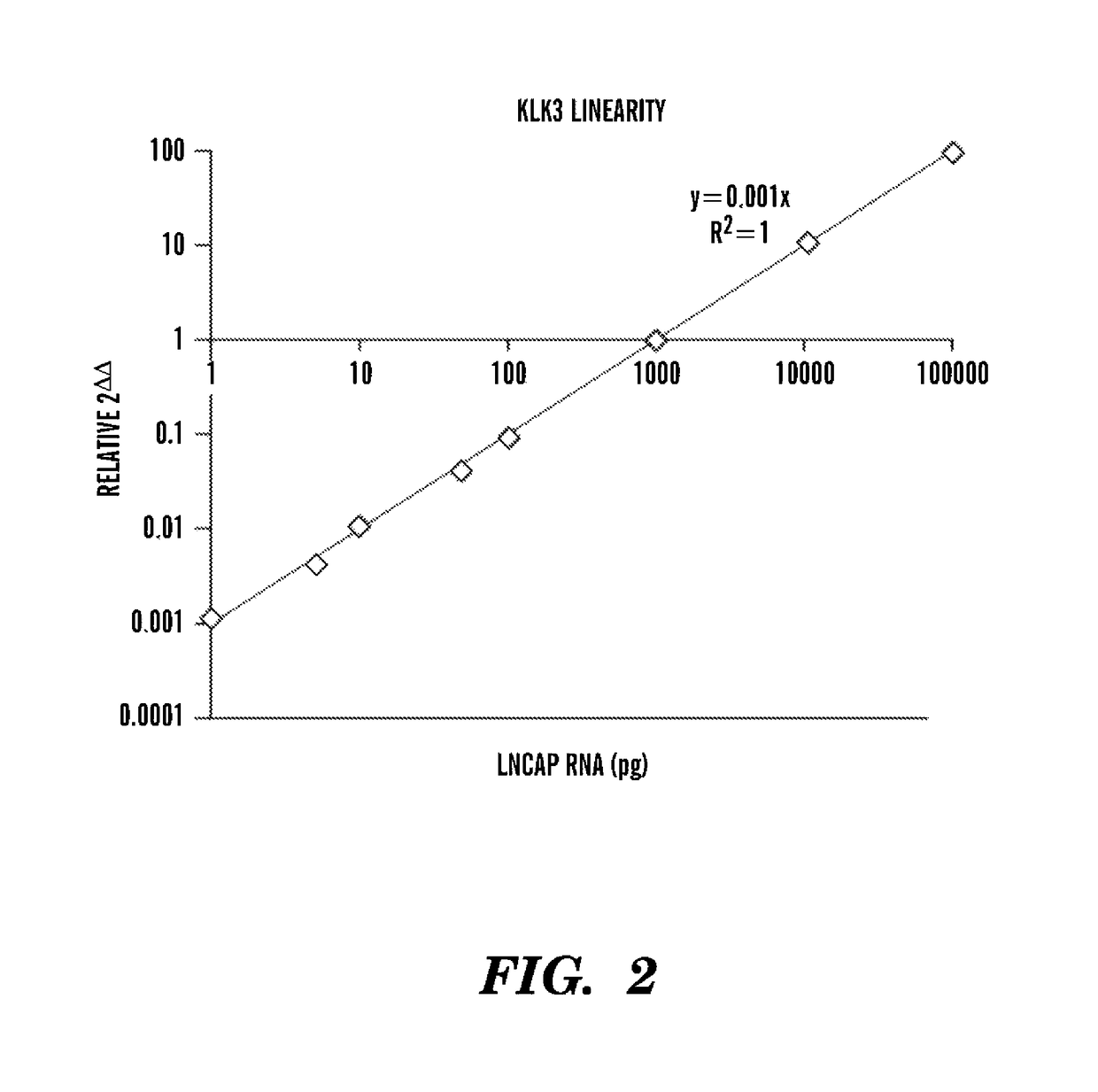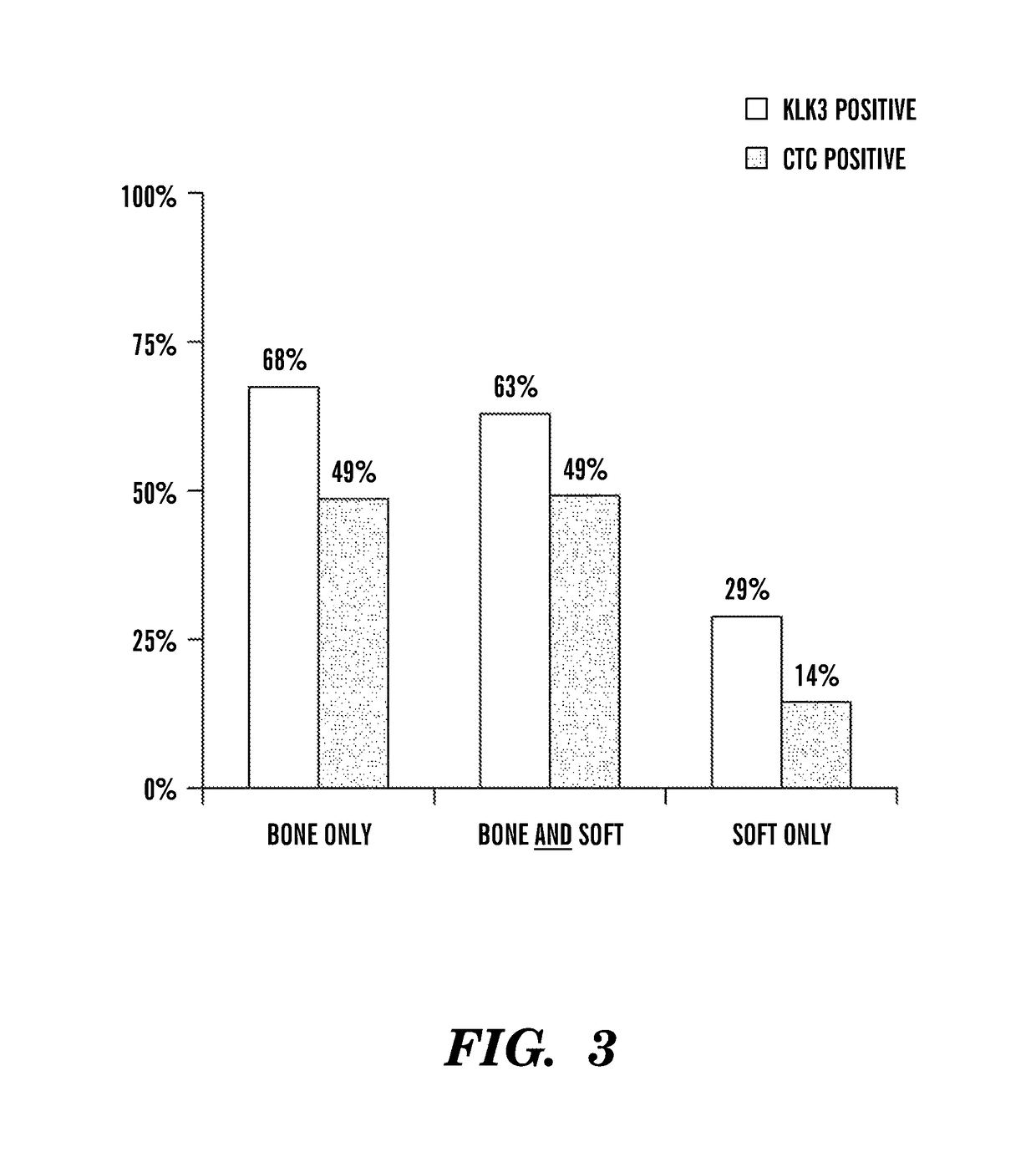Gene expression profile associated with prostate cancer
a gene expression profile and prostate cancer technology, applied in the field of prostate cancer, can solve the problems of inability to detect cells in a significant proportion of patients, difficult to assess the change in prostate cancer metastases, etc., and achieve the effects of easy storage and shipment, poor overall survival, and minimal on-site processing
- Summary
- Abstract
- Description
- Claims
- Application Information
AI Technical Summary
Benefits of technology
Problems solved by technology
Method used
Image
Examples
examples
Patients and Healthy Volunteers
[0043]To select prostate cancer enriched gene transcripts for detection by RT-PCR, the Tissue-specific Gene Expression and Regulation (TiGER) database, the Prostate Cancer Genomic Project (15), and the Novartis Gene Expression Database (16) were interrogated for genes that were overexpressed inprostate tissue relative to peripheral blood mononuclear cells (PBMC). The 130-gene set, 30-gene set and 10-gene set are shown below in Tables 6, 7 and 8, respectively.
[0044]Patients included in the training and validation sets were men treated at MSKCC between August 2006 and February 2009 for progressive mCRPC, according to PSA Working Group 2 criteria. Control samples were obtained from healthy volunteers with no evidence of prostate cancer. Signed informed consent was obtained based on Institutional Review Board-approved protocols prior to acquiring any samples that were clinically annotated and anonymized before batching for testing.
[0045]CTC were enumerated...
PUM
| Property | Measurement | Unit |
|---|---|---|
| temperature | aaaaa | aaaaa |
| survival time | aaaaa | aaaaa |
| concentration | aaaaa | aaaaa |
Abstract
Description
Claims
Application Information
 Login to View More
Login to View More - R&D
- Intellectual Property
- Life Sciences
- Materials
- Tech Scout
- Unparalleled Data Quality
- Higher Quality Content
- 60% Fewer Hallucinations
Browse by: Latest US Patents, China's latest patents, Technical Efficacy Thesaurus, Application Domain, Technology Topic, Popular Technical Reports.
© 2025 PatSnap. All rights reserved.Legal|Privacy policy|Modern Slavery Act Transparency Statement|Sitemap|About US| Contact US: help@patsnap.com



